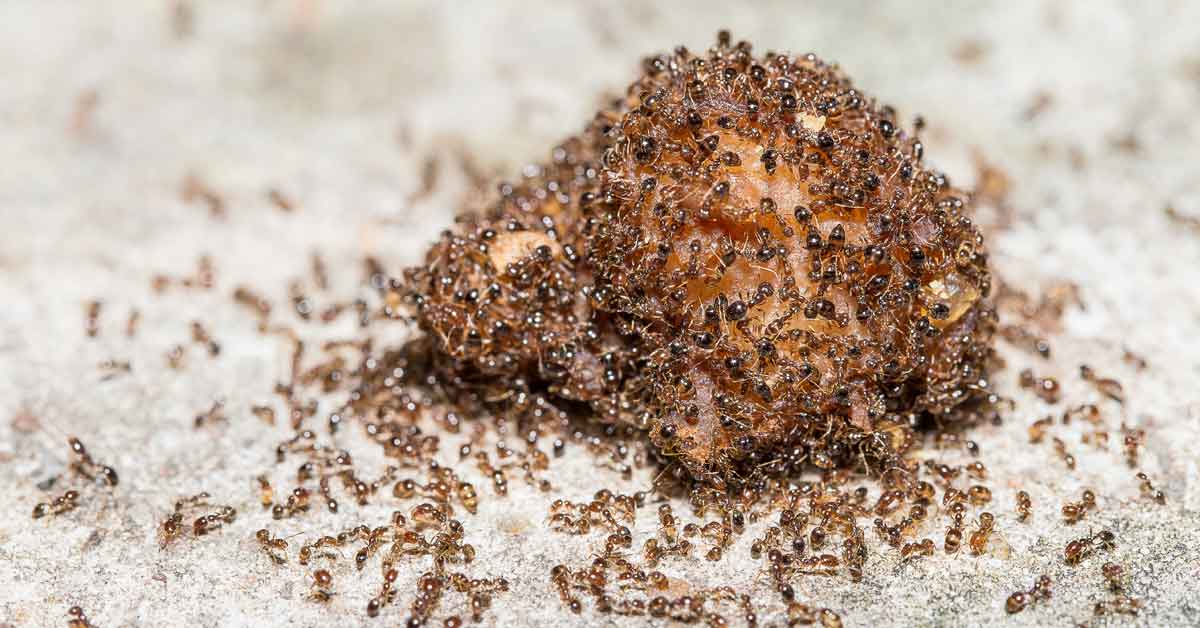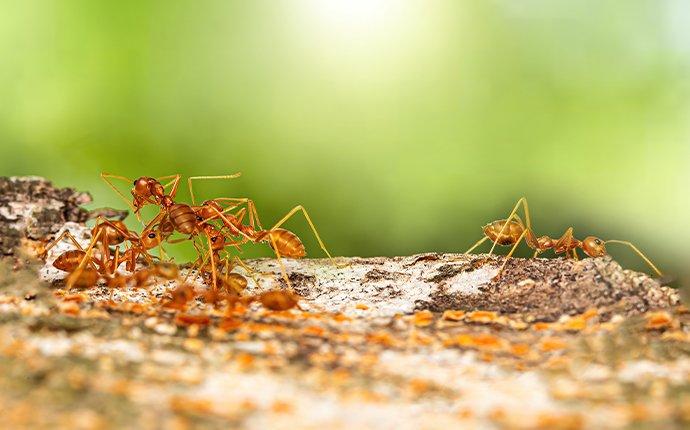Premier Termite Control Services: Make Certain Long-Term Protection for Your Residential or commercial property
Premier Termite Control Services: Make Certain Long-Term Protection for Your Residential or commercial property
Blog Article
Environmental Influence of Insect Control: Harmonizing Effectiveness With Sustainability
The environmental impact of parasite control is a critical problem that requires a fragile equilibrium in between achieving effectiveness in handling parasites and making sure sustainability of our environments. From the use of damaging chemicals that seep right into our soil and water to the unintended effects on non-target species, the repercussions of conventional bug control practices are significant.
Damaging Chemicals in Parasite Control
The utilization of harmful chemicals in parasite control positions significant ecological and wellness threats that call for careful factor to consider and reduction approaches. Chemicals, herbicides, and pesticides are typically used to eradicate pests, yet their prevalent application can lead to unintended repercussions. These chemicals can infect soil, water sources, and the air, affecting not just the targeted pests yet likewise useful bugs, wild animals, and people.

To address these threats, incorporated parasite monitoring (IPM) methods are being advertised as a more lasting option. IPM includes a combination of methods such as organic control, habitat control, and the targeted usage of pesticides as a last hope (ant control asheboro nc). By embracing an alternative method to pest control, we can decrease the environmental and health and wellness impacts related to unsafe chemicals while efficiently managing pest populations
Influence On Non-Target Variety
Taking into consideration the unintended repercussions of insect control methods, the influence on non-target types is an important facet that requires complete assessment. While insect control steps aim to target certain pests, other microorganisms in the ecosystem might be inadvertently affected. Non-target varieties, consisting of beneficial bugs, birds, mammals, and even plants, can suffer direct or indirect injury from pesticide applications or biological control approaches.
Chemicals can have sub-lethal or dangerous results on non-target varieties. As an example, insecticides developed to combat a particular bug pest may damage pollinators like bees or all-natural predators such as ladybugs. In addition, chemical residues can collect in the atmosphere, impacting non-target organisms in time. In a similar way, biological control representatives, if not species-specific, can posture risks to unplanned targets, interfering with the environmental equilibrium.
To reduce the effect on non-target varieties, incorporated parasite monitoring (IPM) strategies that stress an alternative technique to pest control are suggested. These techniques prioritize using environmentally friendly techniques, lessening harm to beneficial organisms while efficiently taking care of pest populations. Conducting extensive danger assessments and monitoring the outcomes of pest control initiatives are important steps in safeguarding non-target species and promoting general community wellness.
Soil and Water Contamination
Unplanned environmental effects of parasite control approaches expand past affecting non-target types, with significant implications for soil and water contamination - termite control. Chemicals, herbicides, and chemical plant foods used in parasite control can seep right into the soil and infect groundwater, positioning a threat to both terrestrial and marine ecological communities.
Water contamination is another critical concern connected with insect control techniques. To mitigate soil and water contamination from parasite control tasks, incorporated insect administration strategies that focus on sustainability and lessen chemical inputs are essential.
Air Air Pollution From Chemical Use
Exposure to air-borne pesticides throughout agricultural applications poses a substantial worry for air pollution control steps. Furthermore, ant control mathews nc chemical drift, where chemicals are carried by the wind to unplanned areas, can lead to the contamination of neighboring environments and water bodies.

Methods for Sustainable Pest Control
In the realm of agricultural methods, executing lasting pest control techniques is vital for maintaining ecological balance and guarding plant yields. Sustainable insect control emphasizes making use of eco-friendly approaches to handle bug populations successfully while lessening damage to non-target microorganisms and environments. Integrated Insect Management (IPM) is an extensively taken on method that integrates organic, social, physical, and chemical control techniques to accomplish long-lasting bug management solutions.
One trick method in sustainable insect control is promoting biodiversity within agroecosystems. By boosting natural enemies of pests, such as predators and parasitoids, farmers can decrease the need for synthetic chemicals. Crop rotation and diversification are likewise effective techniques to interfere with pest life process and develop less positive conditions for bugs to thrive. In addition, making use of pest-resistant crop selections and utilizing strategies like trap chopping can help decrease pest stress without relying greatly on chemical treatments. Ultimately, by integrating these sustainable parasite control strategies, farmers can achieve an equilibrium in between pest management efficiency and environmental stewardship.
Final Thought
To conclude, the ecological impact of bug control techniques have to be very carefully taken into consideration to balance efficiency with sustainability. Dangerous chemicals utilized in insect control can result in soil and water contamination, air pollution, and harm non-target varieties - termite control services. It is crucial to execute sustainable pest control techniques to lessen these unfavorable effects on the atmosphere and promote a healthier ecosystem for future generations
By taking on an all natural method to pest control, we can lessen the environmental and wellness effects associated with harmful chemicals while efficiently managing pest populaces.

To mitigate the air contamination triggered by pesticide use, it is necessary to embrace incorporated parasite monitoring approaches that prioritize the use of non-chemical insect control techniques, such as crop rotation, natural predators, and immune plant selections. Lasting insect control emphasizes the usage of ecologically friendly approaches to take care of parasite populations efficiently while minimizing damage to non-target organisms and environments. Integrated Bug Administration (IPM) is a widely taken on technique that incorporates organic, cultural, physical, and chemical control approaches to attain long-lasting bug monitoring options.
Report this page